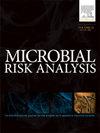Independent and combined effects of exposure to temperature and humidity on social contact in China
IF 4
4区 环境科学与生态学
Q2 ENVIRONMENTAL SCIENCES
引用次数: 0
Abstract
Background
Seasonal variations in social contact (SC) have been documented in prior epidemiological investigations, yet the exposure-response relationships between key meteorological factors and SC remain insufficiently characterized.
Objective
The study aimed to analyze the independent and combined effects of temperature and relative humidity on SC.
Methods
Contact datasets (2015-2018) from six Chinese metropolitan regions (Shanghai, Zhuhai, Guangzhou, Shenzhen, Hong Kong, and Foshan) were analyzed alongside meteorological records. Non-linear associations of temperature and humidity with contact numbers were assessed using generalized additive models. Combined effects were subsequently evaluated through quantile g-computation models, followed by random forest analyses to determine importance.
Results
The independent associations of temperature or relative humidity with the numbers of SC were U-shaped, with 12.0°C and 66% as the thresholds, respectively. The number of total contacts decreased by 0.19 (95% CI: -0.25, -0.13) for each 1°C increase below the threshold (12.0°C), which was higher than that (0.13, 95% CI: 0.11, 0.17) above the threshold (12.0°C). It increased by 0.74 (95% CI: 0.60, 0.88) for each 10% increase of relative humidity during high humidity (≥66%), higher than that (-0.46, 95% CI: -0.62, -0.30) during low humidity (<66%). For combined exposure, there was a J-shaped association of mixture exposure to temperature and relative humidity with social contact, which had similar contribution.
Conclusions
Both temperature and relative humidity were independently and synergistically associated with SC, which indicates the seasonality of some infectious diseases may be partly explained by the seasonal change of SC mediated by temperature and relative humidity.
暴露于温度和湿度对中国社会接触的独立和联合影响
社会接触(SC)的季节变化已在先前的流行病学调查中得到记录,但关键气象因素与SC之间的暴露-反应关系仍未充分表征。目的分析温度和相对湿度对sc的独立和联合影响。方法利用2015-2018年中国6个大都市(上海、珠海、广州、深圳、香港和佛山)的接触数据集和气象记录进行分析。使用广义加性模型评估了温度和湿度与接触号码的非线性关联。随后通过分位数g计算模型评估联合效应,然后进行随机森林分析以确定重要性。结果温度和相对湿度与SC数量呈u型关系,分别以12.0℃和66%为阈值。在阈值(12.0°C)以下,每升高1°C,总接触数减少0.19 (95% CI: -0.25, -0.13),高于阈值(12.0°C) (0.13, 95% CI: 0.11, 0.17)。在高湿(≥66%)条件下,相对湿度每增加10%,其增加幅度为0.74 (95% CI: 0.60, 0.88),高于低湿(<66%)条件下(-0.46,95% CI: -0.62, -0.30)。对于混合暴露,温度和相对湿度混合暴露与社会接触呈j型相关,两者的贡献相似。结论温度和相对湿度与SC具有独立和协同的关系,表明温度和相对湿度介导的SC的季节性变化可能部分解释了某些传染病的季节性。
本文章由计算机程序翻译,如有差异,请以英文原文为准。
求助全文
约1分钟内获得全文
求助全文
来源期刊

Microbial Risk Analysis
Medicine-Microbiology (medical)
CiteScore
5.70
自引率
7.10%
发文量
28
审稿时长
52 days
期刊介绍:
The journal Microbial Risk Analysis accepts articles dealing with the study of risk analysis applied to microbial hazards. Manuscripts should at least cover any of the components of risk assessment (risk characterization, exposure assessment, etc.), risk management and/or risk communication in any microbiology field (clinical, environmental, food, veterinary, etc.). This journal also accepts article dealing with predictive microbiology, quantitative microbial ecology, mathematical modeling, risk studies applied to microbial ecology, quantitative microbiology for epidemiological studies, statistical methods applied to microbiology, and laws and regulatory policies aimed at lessening the risk of microbial hazards. Work focusing on risk studies of viruses, parasites, microbial toxins, antimicrobial resistant organisms, genetically modified organisms (GMOs), and recombinant DNA products are also acceptable.
 求助内容:
求助内容: 应助结果提醒方式:
应助结果提醒方式:


